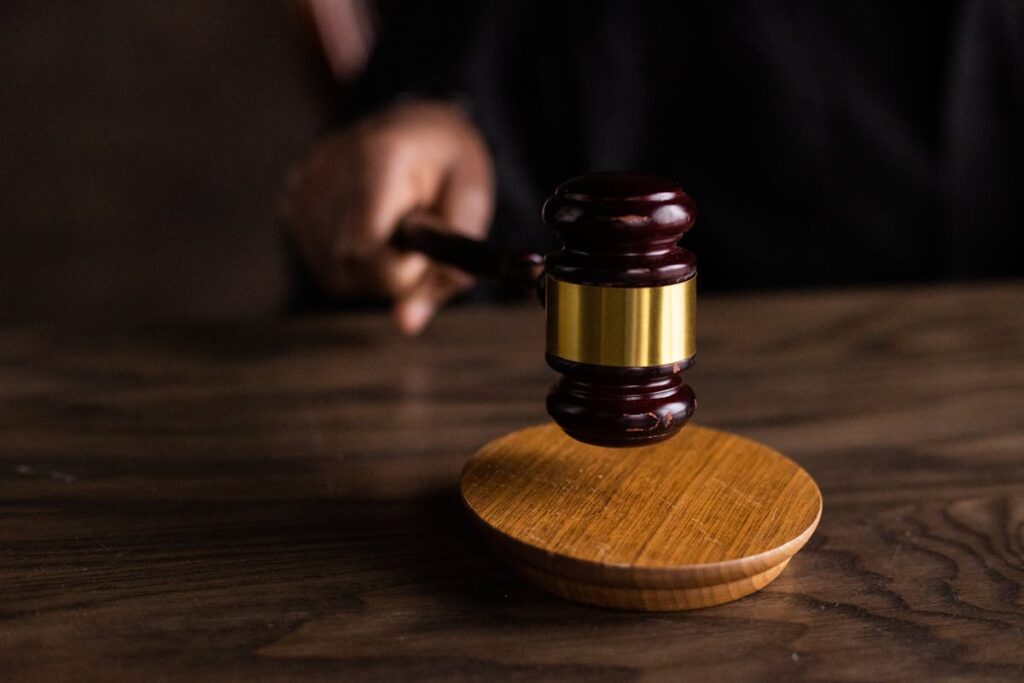In the domain of personal injury and product liability law, groundbreaking accident lawsuits have played a pivotal role in defining corporate responsibility and enhancing consumer safety. Landmark cases, such as those involving McDonald’s, Ford, and General Motors, have not only revealed alarming instances of corporate negligence, but have also led to transformative reforms in safety standards. What lessons can we glean from these high-stakes legal battles and how have they influenced the evolution of our current legal landscape? The implications of these cases extend far beyond their hefty financial settlements.
McDonalds Hot Coffee Case
In the domain of personal injury law, the McDonalds Hot Coffee Case stands as a landmark dispute, often being the litmus test for evaluating the merit of similar claims. This incident, which involved a coffee spill, gave rise to a thorough legal precedent that forever reshaped the landscape of liability lawsuits.
The case emerged in 1992 when a 79-year-old woman, Stella Liebeck, suffered third-degree burns after spilling a cup of McDonald’s coffee in her lap. Her legal team argued that the coffee was unreasonably dangerous and excessively hot, leading to severe injuries. The jury, persuaded by the presented evidence, awarded Liebeck $2.9 million in damages.
This case’s importance lies not only in its high-profile nature but also in the legal precedent it established. It underscored the responsibility of corporations to guarantee the safety of their products or face repercussions. Consequently, corporations began to review their safety standards more meticulously to avert similar lawsuits.
Furthermore, the case sparked a significant public discourse on tort reform, bringing to light the often-ignored implications of seemingly simple accidents. The McDonalds Hot Coffee Case has since been a compelling reference point in shaping future personal injury and product liability laws.
The Ford Pinto Trials
Shifting from the McDonald’s Hot Coffee case, we now turn our attention to the Ford Pinto Trials, a landmark lawsuit in automotive history. This case, centered on the vehicle’s design flaws, ignited debate on manufacturer responsibility and product safety standards. An objective analysis will explore the specifics of the case and the precedent it set in the domain of accident lawsuits.
Pinto’s Design Flaws
Undeniably, the Ford Pinto Trials have left an indelible mark on the annals of accident lawsuits due to the Pinto’s significant design flaws. The issues connected with Pinto safety were not an outcome of unfortunate circumstances but rather a direct result of design negligence.
The Pinto’s design was compromised in the pursuit of cost-cutting, leading to a hazardous condition wherein the fuel tank was located in an area susceptible to damage during rear-end collisions. Engineers and executives were aware of the risk, but no remedial action was taken, a disturbing example of design negligence. Additionally, the lack of a protective shield between the rear bumper and fuel tank was another significant design flaw, increasing the risk of fuel spillage and consequential fires during a collision.
The Pinto’s safety shortcomings were not limited to the fuel tank. The vehicle’s overall structure was weak, providing inadequate protection during crashes. The doors were designed in such a way that they could jam during an accident, trapping occupants inside the burning car.
Infamous Court Case
Shifting our focus from design flaws to the courtroom, the trials concerning the Ford Pinto have become notorious in the legal sphere, serving as a textbook example of corporate negligence. The high profile litigations against Ford Motor Company were sparked by a series of fatal accidents involving Pinto cars, which were discovered to have a design flaw that made them prone to deadly fires in rear-end collisions.
These litigations were indicative of the societal shift towards holding corporations accountable for their actions, especially when those actions risked public safety. As the trials progressed, it became clear that Ford was privy to the Pinto’s design flaws and potential for fatal accidents, yet chose to prioritize profits over consumer safety.
The outcome of the Pinto trials resulted in landmark settlements that influenced future product liability cases and corporate behavior regulations. The significant financial and reputational cost incurred by Ford served as a stern reminder to corporations about the importance of prioritizing safety over profit margins. Consequently, the Ford Pinto trials have left an indelible mark on the field of corporate negligence law, shaping the legal landscape for years to come.
The GM Ignition Switch Scandal
Turning our attention to the GM Ignition Switch Scandal, we will carefully dissect the key details that led to its unraveling, and the subsequent implications for General Motors as a corporation. We will also consider the outcomes of the consequential lawsuits, examining the significant impacts they had on both legal and automotive landscapes. This analysis will provide a thorough understanding of this landmark case, its repercussions, and its influence on future automotive safety standards and legal judgments.
Scandal Unraveling: Key Details
Emerging from the shadows of corporate secrecy, the General Motors (GM) ignition switch scandal represents a pivotal moment in the history of accident lawsuits. The scandal implications were profound, exposing a corporate culture that prioritized profit over safety.
At the scandal’s core was a defective ignition switch installed in millions of GM vehicles, causing them to suddenly turn off while on the move, disabling airbags and power steering. Despite being aware of the flaw as early as 2001, GM failed to recall the affected vehicles until 2014. The delay resulted in at least 124 deaths and 275 injuries, many of which could have been avoided with timely corporate accountability.
The key detail that aided the unraveling of the scandal was the discovery of an internal GM memo showing that a redesign of the faulty switch occurred in 2006, but without a corresponding change in part number. This unusual practice made it difficult for investigators to trace the issue, delaying the recall and leading to more accidents.
The scandal is a stark reminder of the potential dire consequences of corporate negligence and the importance of corporate accountability in preventing such incidents. It underscores the need for transparency and safety prioritization in the automotive industry.
Implications for GM
The fallout from the GM ignition switch scandal had far-reaching implications for the automotive giant. The crux of the scandal hinged on GM negligence, as the company knowingly sold vehicles with faulty ignition switches that led to numerous accidents. This lack of corporate responsibility resulted in a significant blow to GM’s reputation, which had been painstakingly built over years of dedication to safety and quality.
The implications went beyond the immediate financial repercussions of the numerous lawsuits filed against the company. GM’s credibility as a trustworthy car manufacturer was severely compromised, which had a lasting impact on consumer confidence. The scandal underscored the importance of corporate accountability in maintaining brand integrity and customer trust.
Moreover, the scandal served as a wake-up call for GM to revamp its internal safety standards and quality control measures. It also prompted a wider discussion in the industry about the crucial role of safety in automotive design and manufacturing. The GM ignition switch scandal, consequently, had far-reaching consequences that extended beyond the immediate lawsuits and financial penalties and served as a stern reminder of the importance of corporate accountability and safety in the automotive industry.

Lawsuit Outcomes and Impacts
In the aftermath of the GM ignition switch scandal, the lawsuit outcomes and their subsequent impacts represent a critical chapter in the company’s history. Significantly, the court cases set important lawsuit precedents, reshaping the landscape of legal accountability for automobile manufacturers.
The GM scandal culminated in a series of high-profile lawsuits, resulting in the company agreeing to pay approximately $2 billion in penalties. This was one of the largest compensation structures ever implemented in the automotive industry. The severity of the punitive damages signaled a clear message to manufacturers about the gravity of overlooking safety issues and the potential legal consequences.
The lawsuit outcomes have had substantial impacts on GM, both financially and reputationally. The company faced immense public scrutiny, which triggered a thorough review of their safety protocols. This scandal has additionally influenced the wider industry, prompting other manufacturers to proactively address safety issues to avoid similar lawsuits.
The Big Tobacco Lawsuits
Landmark legal battles marked the landscape of the late 20th century, none more notable than the big tobacco lawsuits. The litigation centered around the public’s growing awareness of the health consequences of smoking and the industry’s alleged manipulation of nicotine levels to increase addiction.
During this period, tobacco regulations were lax, enabling companies to market their products aggressively with little regard for public health. However, as medical research began to link tobacco use to various diseases, including lung cancer and heart disease, the public outcry for stricter tobacco regulations grew louder.
The lawsuits against big tobacco companies brought to light the industry’s deceptive practices, such as suppressing scientific data linking smoking to deadly diseases, and marketing their products to minors. These lawsuits resulted in significant financial penalties for the tobacco industry, leading to a drastic shift in their business practices.
Moreover, the verdicts had a profound impact on public policy, leading to stricter tobacco regulations, including bans on advertising and increased taxes on tobacco products. This not only highlighted the industry’s unethical practices but also underscored the need for more robust regulatory oversight to safeguard public health. The big tobacco lawsuits consequently set a precedent for holding industries accountable for their actions and their impact on public health.
Deepwater Horizon Oil Spill Litigation
While the Big Tobacco lawsuits marked a significant turning point in corporate accountability, another pivotal legal battle in recent history emerged from the environmental sector: the Deepwater Horizon Oil Spill litigation. This case underscored the necessity for oil spill accountability, particularly in relation to the devastating environmental impact.
The litigation followed the catastrophic explosion of BP’s Deepwater Horizon drilling rig in 2010, which resulted in the largest marine oil spill in history. BP and its partners were found liable for the disaster, leading to a series of lawsuits and settlements with environmental and economic damages reaching billions of dollars.
The litigation highlighted several key points:
- The legal responsibility of corporations for environmental disasters
- The extent of damages caused by oil spills
- The role of government in enforcing environmental laws
- The significance of corporate policies in preventing environmental catastrophes
- The need for stringent regulations and oversight in the oil industry
This case serves as a stark reminder of the potential for catastrophic environmental damage from corporate negligence, and the vital role of litigation in holding corporations accountable. The Deepwater Horizon Oil Spill litigation is a landmark case in the ongoing struggle for environmental justice and corporate accountability.
Asbestos and Mesothelioma Cases
Shifting our focus from environmental disasters to public health crises, another instrumental field of accident litigation lies in the domain of asbestos and mesothelioma cases. Asbestos, a naturally occurring fibrous silicate mineral, has been extensively utilized in many industrial applications due to its inherent heat-resistant properties. However, the association of asbestos exposure with severe health implications, particularly mesothelioma, a lethal form of cancer, has led to a surge in related lawsuits.
Mesothelioma diagnosis often stems from a history of asbestos exposure, usually in an occupational setting. Once inhaled or ingested, these microscopic fibers can lodge in the body, causing inflammation and scarring that may lead to the development of mesothelioma years or even decades later. The latency period, coupled with the aggressive nature of the disease, often results in poor prognosis.
The legal landscape of asbestos and mesothelioma cases is complex, involving intricate scientific evidence and detailed medical histories. These lawsuits often hinge upon establishing the nexus between asbestos exposure and mesothelioma diagnosis, requiring expert testimonies and extensive documentation. As a result, these cases have been instrumental in shaping policies on occupational health and safety standards, thereby serving as a significant milestone in accident litigation.
The Takeda Actos Settlement
In the domain of pharmaceutical litigation, the Takeda Actos settlement stands as a notable instance of a major corporation being held accountable for adverse health effects linked to its product. Takeda Pharmaceutical Co., the manufacturer of the diabetes drug Actos, ended up settling thousands of Takeda lawsuits for a whopping $2.37 billion in 2015.
This settlement arose from the claim that Takeda concealed Actos dangers, especially its link to bladder cancer. This case underscores the power of litigation in holding corporations accountable for public health issues. Here are some salient aspects of the case:
- Takeda did not admit liability in this settlement.
- The company had to pay an additional $100 million if it didn’t resolve 95% of the lawsuits.
- The plaintiffs claimed Takeda hid the risks of Actos.
- The average payout per claimant was around $296,000.
- The settlement was one of the largest in U.S. history for a drug liability case.
This landmark case reinforces the necessity of transparency in the pharmaceutical industry, and it emphasizes the role of the legal system in protecting public health. It also showcases the potential of collective litigation in achieving justice for victims.
The Johnson & Johnson Talcum Powder Lawsuits
Following the trail of high-profile pharmaceutical lawsuits, the case of Johnson & Johnson’s talcum powder stands out. The multinational corporation, known for its wide variety of medical devices, pharmaceuticals, and packaged goods, has been embroiled in a series of legal battles concerning the safety of its talcum powder products.
The crux of the contention lies in the alleged link between the long-term use of their talcum powder and an increased risk of developing cancer. The lawsuits argue that Johnson & Johnson knowingly concealed information about potential health risks associated with talc, a key ingredient in their product.
A compelling body of scientific studies have associated talcum powder use with elevated cancer risks, particularly ovarian and lung cancer. Plaintiffs argue that the company failed to adequately warn consumers, whereas Johnson & Johnson staunchly denies any wrongdoings and maintains the safety of its products.
The legal battles have resulted in varied outcomes. While some courts have ruled in favor of Johnson & Johnson, others have mandated millions in damages to plaintiffs. This ongoing saga underscores the critical importance of transparency and consumer safety in the pharmaceutical industry.
Frequently Asked Questions
What Is the Legal Process for Filing an Accident Lawsuit?
The legal process for filing an accident lawsuit involves a precise filing timeline, meeting specific legal requirements, such as drafting a complaint, serving the defendant, and subsequently proceeding through discovery and trial phases.
How Are Compensations Determined in These Groundbreaking Accident Lawsuits?
Compensations in accident lawsuits are typically determined through careful assessment of damages, considering various factors such as medical costs, lost wages, and pain and suffering endured by the victim. Each case varies considerably based on individual circumstances.
What Role Do Expert Witnesses Play in Accident Lawsuits?
Expert witnesses play a vital role in accident lawsuits by providing expert testimony to establish facts. Their knowledge and credibility help the court understand complex issues, ultimately influencing judgment regarding liability and compensation.
Can Accident Lawsuits Be Filed Against Government Entities?
Yes, accident lawsuits can be filed against government entities, albeit with certain limitations due to the doctrine of sovereign immunity. However, under specific circumstances, public liability may be established, permitting legal action.
How Does a Class-Action Lawsuit Differ From an Individual Lawsuit?
A class-action lawsuit involves a group of individuals collectively suing a party, while an individual lawsuit pertains to a single person’s claims. The former addresses common injuries, whereas the latter focuses on personal grievances.

